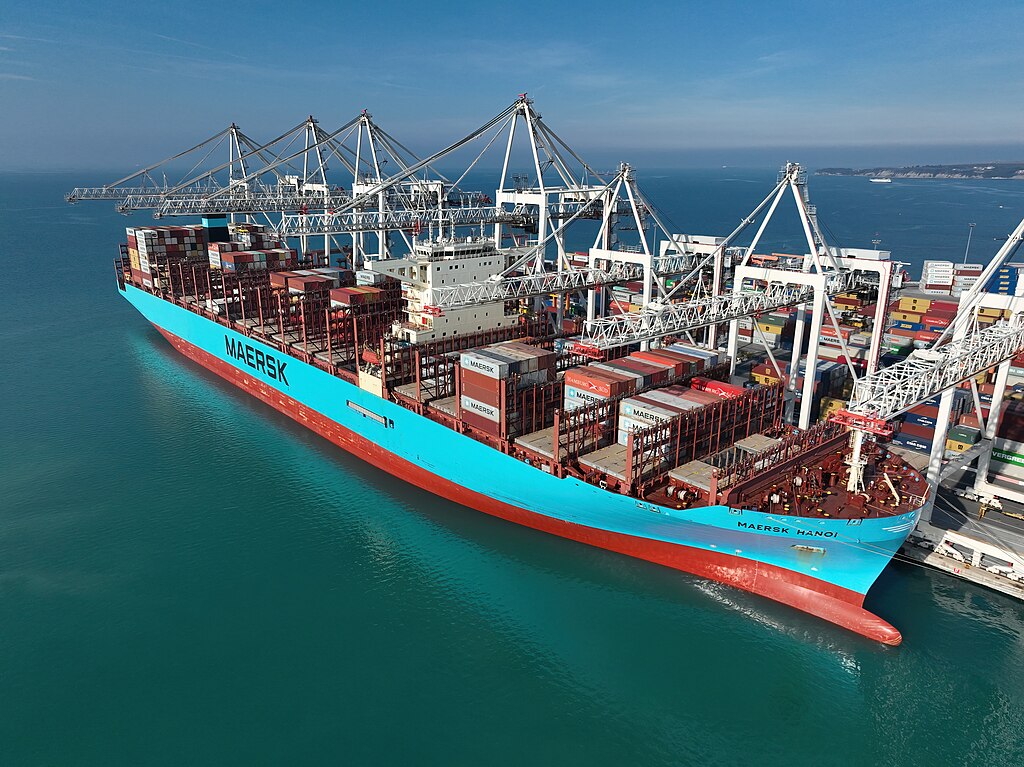The U.S. trade deficit surged in December as imports hit a record high, driven by businesses rushing to secure foreign-made goods ahead of potential tariffs. The deficit jumped 24.7% to $98.4 billion, the highest since March 2022, as imports climbed 3.5% to $364.9 billion, largely due to increased purchases of finished metals and computers.
The Commerce Department reported significant deficits with China, Mexico, and Canada, all of which have faced tariff threats. President Trump suspended a 25% tariff on Mexican and Canadian goods until next month, while a 10% tariff on Chinese goods took effect Tuesday. Economists suggest businesses may continue stockpiling imports, keeping the deficit elevated.
Capital Economics' Thomas Ryan noted that despite expectations for an export rebound, the trade gap will likely remain wide. Goods imports soared 4% to $293.1 billion, with industrial supplies and materials rising by $10.8 billion, largely from Switzerland. Some analysts believe this surge isn’t solely due to tariff concerns.
Exports fell 2.6% to $266.5 billion, with goods exports declining 4.2%, the most since May 2020. Capital goods, industrial supplies, and consumer goods saw sharp declines, contributing to an 18.2% increase in the goods trade deficit to a record $123.0 billion.
The Institute for Supply Management (ISM) reported that businesses are worried about rising costs and supply shortages from tariffs. Meanwhile, U.S. Treasury yields fell, and Wall Street stocks climbed.
Despite the trade deficit’s impact, the U.S. economy grew at a 2.3% annualized rate in Q4, down from 3.1% in the previous quarter. Analysts see little risk of major GDP revisions but warn that prolonged tariff uncertainty could disrupt economic momentum.



 Germany’s Economic Recovery Slows as Trade Tensions and Rising Costs Weigh on Growth
Germany’s Economic Recovery Slows as Trade Tensions and Rising Costs Weigh on Growth  European Oil & Gas Stocks Face 2026 With Cautious Outlook Amid Valuation Pressure
European Oil & Gas Stocks Face 2026 With Cautious Outlook Amid Valuation Pressure  Trump Meets Mexico and Canada Leaders After 2026 World Cup Draw Amid USMCA Tensions
Trump Meets Mexico and Canada Leaders After 2026 World Cup Draw Amid USMCA Tensions  Japan’s Nikkei Drops as Markets Await Key U.S. Inflation Data
Japan’s Nikkei Drops as Markets Await Key U.S. Inflation Data  Fed Meeting Sparks Division as Markets Brace for Possible Rate Cut
Fed Meeting Sparks Division as Markets Brace for Possible Rate Cut  China Urged to Prioritize Economy Over Territorial Ambitions, Says Taiwan’s President Lai
China Urged to Prioritize Economy Over Territorial Ambitions, Says Taiwan’s President Lai  Europe Confronts Rising Competitive Pressure as China Accelerates Export-Led Growth
Europe Confronts Rising Competitive Pressure as China Accelerates Export-Led Growth  U.S. Stocks Rise as Cooler Inflation Boosts Hopes for Fed Rate Cut
U.S. Stocks Rise as Cooler Inflation Boosts Hopes for Fed Rate Cut  Spain’s Industrial Output Records Steady Growth in October Amid Revised September Figures
Spain’s Industrial Output Records Steady Growth in October Amid Revised September Figures  Oil Prices Rise as Ukraine Targets Russian Energy Infrastructure
Oil Prices Rise as Ukraine Targets Russian Energy Infrastructure  BOJ Faces Pressure for Clarity, but Neutral Rate Estimates Likely to Stay Vague
BOJ Faces Pressure for Clarity, but Neutral Rate Estimates Likely to Stay Vague  IMF Deputy Dan Katz Visits China as Key Economic Review Nears
IMF Deputy Dan Katz Visits China as Key Economic Review Nears  RBI Cuts Repo Rate to 5.25% as Inflation Cools and Growth Outlook Strengthens
RBI Cuts Repo Rate to 5.25% as Inflation Cools and Growth Outlook Strengthens  Oil Prices Hold Steady as Ukraine Tensions and Fed Cut Expectations Support Market
Oil Prices Hold Steady as Ukraine Tensions and Fed Cut Expectations Support Market  U.S. Futures Steady as Rate-Cut Bets Rise on Soft Labor Data
U.S. Futures Steady as Rate-Cut Bets Rise on Soft Labor Data 




























